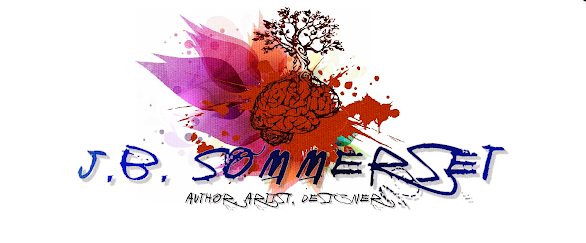Showing, not telling... This is us.
I have talked about this subject before, and it's critical to good story telling. I don't know how many more times I will bring this up, but I will... So just be prepared for it.
This topic is going to come back like the blood everyone thought they totally got cleaned up, but under luminal and black light? Yep, it's still there. It will come back like the drunk guy all of us in the car know we hit but aren't sure is dead. Or that stalker that sneaks back into our house after we got the restraining order. The one that sits quietly in the dark waiting to talk in a distant and mysterious tone... you get the idea.
The technique I am speaking of is, of course, the "show don't tell" technique. The "TLDR" is simple, it is a narrative technique that assumes the audience aren't morons and also that they can figure things out for themselves. Things like subtext, language usage, foreshadowing, use of senses, thoughts, feelings, (ad nauseum) the get the point across. In other words; the author does their job and uses their story telling ability to show the reader what is actually happening. No diatribes, no lengthy plot monologues, no narrative explanations, and absolutely no dialogue renditions.
Too many times authors, screen writers, directors, stop the show and explain things that don't need to be explained, or even worse, use the character's dialogue to explain the story points- ergo walking us through the story like we are all idiots. This is jarring and takes us away from the story. It is a horrible way to write, and even worse in movies.
In contrast, showing, not telling means that you use your skills as a writer to create the picture in a way that the reader or audience gets, this eliminates the need to grab their little baby hands and walk them through understanding your message. You paint the picture in a cohesive way and show the audience what it means, leaving it up to the audience to use the clues and their imagination to figure it out. This is part of the magic of story telling, and it engages the audience. It makes them think about the story, and they become a participant. They make the investment, you deliver the payoff. Everyone is happy.
I was introduced to a show recently that excels at this technique, and although the show isn't my favorite (it's not my cup of tea), I have to give it credit when it comes to "showing not telling". The show I am speaking of is "This Is Us" which can be seen on Netflix. I stayed away from this one because I heard it was "pretentious" and "high-brow"- two things I am not really into, mostly because I hate wasps, and massive egos. However, I listened to the wrong people on this one. The show is good, it's a little long winded at times, but it does some things right.
It's a very skillfully woven drama that walks with us through the lives of a family and their lineage over several decades, their family, their children, and grandchildren. At first I thought this was a typical drama, that, much like other dramas, relied on an emotional response to suck viewer in. In many ways it does it's job by eliciting an emotional response. However, the emotional response we experience as viewers isn't attached to the drama, or the events in the show. The emotional response is attached to the meaning and context, this creates a much more realistic emotion than the events themselves do. In this way, the smallest or the largest thing in the show can have that attachment- and there are a number of objective and subjective items/objects/events that carry the emotional weight. This allows the writer to show us the meaning again and again in different ways and it still has the same impact. Brilliant!
There are little things in this show, that appear for only a blip, little tiny pieces of context that you almost miss if you blink. Then the writers let the audience stew on them for several episodes, and let them wonder what the meaning is. The whole while, they are building the context around the "blip". Then, suddenly, all the parts of the puzzle fall into place and the little thing you saw five or six episodes back, has a much larger meaning and it changes the way you interpret the message.
The writers did an amazing job at building the meaning, adding the context, giving the dimensions, and helping the viewers to feel what the characters do. Then, when that moment comes, when that last puzzle piece falls into place- it's a very gratifying feeling. It beats the crap out of simply explaining everything, and then stepping back and expecting us to "have a moment" with characters. Characters we never struggled with or saw things through their eyes.
This show scored a 94% on Rotten Tomatoes, that's hard to do, especially in todays world of corporate narratives, ones telling writers how to write a good story. All the while bending them to trendy topics and carefully crafted political agendas. Most of the time, being "inclusive" and "diverse" ruin the story, case in point, that god-awful "Rings of Power" shite that Amazon put out. I am still mad about that. Not in this case.
This Is Us was created to address some of our modern cultural issues, and it was done so in such a way as to walk a very delicate line. It was written with inclusion and diversity in mind. When it comes to addressing these topics, the line is best walked by showing the audience rather then telling them. Every one will have their own stance on certain things, trying to change that will alienate your audience. Showing them leaves the interpretation up to them, in essence allowing them to see the reflection of their own beliefs and feelings. In this way, we can expose the reader/viewer to new points of view without pissing them off or disenfranchising them.
I appreciated this show and was thankful that someone out there still writes to show, not tell. For anyone who wants to see how it's done, take a look at "This Is Us", especially seasons one and two.
Cheers!




Comments
Post a Comment